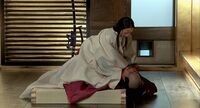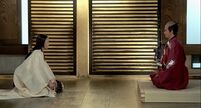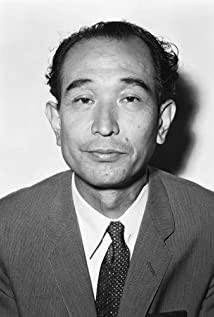Japanese director Kurosawa Min’s "Chaos" is a successful work adapted from Shakespeare’s famous tragedy "King Lear". It is not only one of the most widely discussed works in Kurosawa Min’s movies, but also one of the most widely discussed works. Following Rashomon in 1950, Kurosawa's film has won the most awards and the highest honor. In the category of film art, "Chaos" has won the following awards: (slightly, please Baidu by yourself)
In this article, we will start with the background of Kurosawamin and
1. Background: Kurosawamin and "Chaos"
Jia, Kurosawa (Akira Kurosawa, 1910-1998)
1. Biographical and psychological analysis (slightly, please Baidu yourself)
2. Creative style and thoughts, psychological activities (slightly, please Baidu by oneself)
3. Achievement and influence of film history (slightly, please Baidu by yourself)
B.
Analysis: Comparison between
A. The psychology of Hei Zemin Activity analysis and its projection on
The films in the performance of Akira Kurosawa are drawn first, and then shot according to the screen. There are hundreds of sketches of "Chaos", and they are all created in oil paintings. "Chaos" makes Kurosawa Ming bewitched. He often falls into fantasies, and his mind is full of images he wants to shoot. The end of the film is a bloody, prophetic massacre, which evokes Kurosawa's most terrifying childhood memory-the fear of nature.
In "Chaos", as the plot between Xiuhu and his son is divided and antagonized, leading to flesh and blood, the film shows us a series of clouds with good fortune and bad luck: the beginning of the film is thick and rushing, and there is a thunderstorm in the distance. The signs of thunder, the sound of thunder coming from a distance, heralding unusual events; when Xiuhu handed over power to Taro and drove away Saburo who truly loved him, Mu Yun will cover the setting sun, and the setting sun will be like blood. People feel an ominous omen; and when the tragedy finally happens, black clouds pounce and roll like a dragon that swallows people, big rain drops, lightning flashes and thunder, this group of different shades, unpredictable and extremely rich The metaphorical cloud, together with the light and dark interlaced sunlight and the vast, silent, desolate and lonely grassland, constitute an effect of God looking down on this tragedy on earth.
Kurosawamin’s Bushido plot can also be found in
B. Comparison between
Kurosawa is one of the most westernized directors in Japan. This is not only reflected in the advanced shooting methods of his film works, but also in the source of materials when he creates films. The works of world writers such as Shakespeare and Gorky have been repeatedly used by Kurosawa. The cultural methods of the Japanese nation are on the screen. Most of the plots of "Chaos" are adapted from Shakespeare's famous play "King Lear". Of all the films adapted from Shakespeare's play, only Akira Kurosawa's trick was transplanted to the Japanese background in the Middle Ages, and it was called "the most important" by Western film critics. Excellent and most accurate film that expresses the spirit of Shakespeare’s original works." This time, Kurosawa learned the unsuccessful lesson of "Spider's Nest" which was also adapted from "Macbeth". "Chaos", while adhering to the spirit of Shakespeare's drama, has never forgotten to adhere to the inherent soul of the Japanese national spirit. . Based on this, we have seen the perfect combination of the deeds of the Japanese overlord Morimoto during the Warring States period and the plot of "King Lear", witnessed a tragedy of father and son brothers fratricide, family destruction, and experienced the desire for power. The thrilling "evil" of human nature.
The biggest problem facing Shakespeare's play on the screen is how to properly retain the style of the stage play in the film. Fortunately, Akira Kurosawa solved this problem with his superb film skills. In order to preserve the style and charm of the stage play to the utmost extent, most of the film scenes are shot in the middle and long range, and seldom give the actors a long time. Close-up shots, especially Xiuhu's close-up shots, are rare. In his most desperate time, the general method of film processing, the lens will be close-up of the face of the actor, pulling the distance between the audience and the actor, allowing the audience to be careful Take a look at his face of despair and grief, but the lens of the film always keeps a certain distance from Xiuhu.
Movies and stage plays are fundamentally different, but Kurosawamin’s films have the charm of stage plays; the limited stage space and set effects of stage plays make the audience's attention focus on the actors and the plot itself, rather than literature. Style, magnificent, magnificent scenes that can be imagined; in
In addition, "Chaos" also uses the "blank" technique of Kurosawamin's Eastern art painting mentioned earlier. In the film, mountains and grasslands are used to replace the blanks in the painting, and the characters are placed in a small space in the picture. The smallness of the characters is in sharp contrast with the majesty and majesty of nature. This composition method can not only establish the epic style of the film, but also create the effect of the stage play.
The greatest charm of Shakespeare's play lies in its profound revelation of human nature, and the classic "Chaos" born out of Shakespeare's play is naturally not inferior in this respect. In fact, Kurosawa’s films have always embodied his deep humanistic care. Most of the films have a very strong image and profound moral concepts and philosophies, "Rashomon", "Seven Samurai", and "Dream". Both are deafening "humanity masterpieces".
Hegel once said that evil is the driving force behind the progress of history. This sentence used in the plot of "Chaos" can be said to be the most reasonable saying. Similar to the division of power between "King Lear" and the three princesses, the plot of the film starts from the struggle between Xiuhu's two sons Dalang and Jiro for the throne. The evil in human nature-the desire for power-has been driving the development of the plot. . If Dalang and Jiro’s infinite desire for power caused them to disregard the feelings of flesh and blood, and killing brothers and fathers represents the "total evil" in human nature, then Madame Kaede, who is desperate for revenge, is far less evil than Dalang. Erlang came thoroughly, and the two courtiers who betrayed Xiuhu for some personal benefit were the kind of despicable villains. In stark contrast to them was the good camp composed of Hirayama, Kakuami, Sueda, and Saburo. Hirayama and Kuang Ami represent the goodness of loyalty and integrity, while Madame Su who is committed to the Buddha and the kind and straightforward Saburo represent the innate "all goodness"; in terms of the arrangement of the characters and the structure of the plot, except In addition to the gender swap, the jester and the loyal minister run through the play, and "Chaos" and "Lear King" are almost in the same tone.
The ending of the film retains the usual characteristics of Shakespeare's tragedy: sinful people, good people, damn people, and people who shouldn't die are all dead, leaving only endless thoughts and sighs to the audience. The audience is like Xiuhu in the film, with their deep eyes, they can see the good and evil in this world, and see through the human nature.
Participation and discussion:
B. Quoting
to "Chaos" As mentioned in the previous article, since the filming form of "Chaos" creates the same psychology as the audience and watching stage plays, it can reduce the formal value of movies and stage plays in terms of the essential value of tragedy. Keeping the distance between the audience and the actors creates the "tragic aesthetic" conditions mentioned by Zhu Guangqian: making the audience realize that they are doing "tragic appreciation" instead of creating "dreams" like ordinary movies Collective unconscious psychology; the stage-drama-style shooting technique and picture structure heighten the artistic value of "Chaos" and emphasize the beauty of tragedy.
Contrast Zhu Guangqian's review in "Tragedy Psychology" to "Chaos":
1. Psychological distance: The background of "Chaos" occurred in a fictional family of rulers during the Warring States period in Japan; the ruling class of the Japanese version of "King Lear" The struggle is far away from the audience’s own social status. Secondly, the time distance in the Warring States period is long enough, and apart from the Japanese and northern audiences, the space distance is also far enough for audiences in other countries. Therefore, for Western countries , There will be more psychological buffers than we can, and we can devote ourselves to aesthetics.
2. Destiny: Because they come from "King Lear" and "Maori Yuanji", we know that they must die. This is the case from the beginning. They can never change, no matter how hard they work, and this destiny depends on the director's attitude towards nature Under the portrayal of, there are more unresistible decisions determined by the heavens.
3. Lofty and regret: The loyal and uncompromising goodness represented by the loyal ministers and jesters in the story, and the "all goodness" represented by Madam Su and Saburo, are all similar to the character of the characters in the character of "King Lear", because they are pure, so Noble, and because of the tragic fate of such a noble character, the beauty of tragedy has been strengthened.
4. Conclusion
In terms of an adaptation of the work, is "Chaos" in the position of tragedy the same as "Lear King" in the status of the repeated benefits, or to create a new tragic artistic value? The following will take other adapted works as examples for discussion.
"Romeo and Juliet" is a typical example. The more famous modern adaptations include "West Side Story", "Romeo and Juliet" and "William Shakespeare's Romeo". + Juliet)>. "West Side Story" uses the immigrant community in New York at that time as a reference, and makes the process of describing the story full of reality and irony. This somewhat reflects the hidden problems behind the rapid growth of American society after the war: racial discrimination, youth Crime, violence and cultural generation gap.
"Romeo and Juliet" and "William Shakespeare's Romeo + Juliet", in which the latter story takes place in modern times, and the location is changed to a fictional city named Verona Beach , The weapons of character duels changed from swords to firearms, and the confrontation between the two families of Montejo and Capalette was not only because of feuds, but also for corporate warfare, using gorgeous scenery, exquisite costumes and Shakespeare’s original classical dialogue. Both films have won many awards, but their entertainment value is higher than their artistic value, and because they use young actors, although they are loyal to the original work, they will affect the aesthetic mentality of the work due to their insufficient acting skills while the audience appreciates them. Expressiveness destroys the tragic nature of the work.
Disney animation "The Lion King" is based on "Hamlet", using the advanced animation technology of the time, and accompanied by magnificent symphony, fusion of local original music in Africa, won the 1994 Oscar for Best Original Music and Best Two awards for the theme song of the movie have become one of the milestone works of Disney Animation. Later, the film was adapted into a musical and was nominated for 11 Tony Awards that year, including 6 awards including Best Music and Best Director. The achievement of the play is mainly due to the original cartoon, the main complaint is that the audience is children, so the "Hamlet" is changed to a reunion comedy, in which the characters are transformed into animals in the setting, which is a brand new attempt, the musical achievement of the musical. No less than "West City Story", it is another peak. But because it has changed the nature of the tragedy, and the animal form has weakened the level of depiction of human nature, its overall artistic achievement is low except for innovation.
The adaptations of Shakespeare’s works are too complicated to be published. The movie version of "King Lear" itself has three versions: the Russian version in 1971, the American version in 1987, and the British version in 2008. However, there are fewer adaptations. Is to maintain the original. Compared with the above-mentioned cases of adaptation of other films and musicals, the adaptation of "Chaos" is far more successful than other works. The achievements of other works are mostly in the success of non-dramatic and artistic styles and techniques, such as music and dance, and due to the success of










